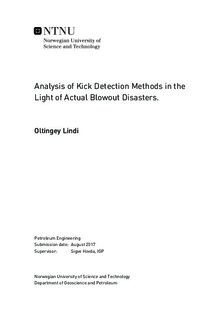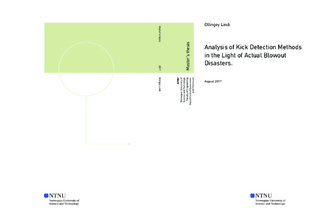| dc.description.abstract | Kicks or formation fluid influxes pose persistent challenges and operational costs during drilling, workover, completion and sometimes after temporary abandonment operations. Despite of presence of variety of kick detection methods, oil and gas wells still experience undetected kicks and detected kicks which sometimes becomes uncontrolled and results into blowout. Kicks that evolved into blowout stage cost billions of dollars, human lives and damage to the environment. For instance Macondo well incident that occurred in 2010 cost about $40 billion and 11 fatalities, Piper alpha in north sea that occurred in 1988 cost about $3.4 billion and 167 fatalities, and Petrobras 36, Brazil, that occurred in 2001 cost about $350 million and 11 fatalities (Tabibzadeh & Meshkati, 2014a). So it s better to incur cost to detect and control kicks rather than healing its consequences. The available methods for kick detection has its strength and weaknesses. These weaknesses give a loop for kicks to flow to surface undetected and hence it might bring about blowout disasters. Therefore the main goal of this thesis will be to analyse kick detection methods to recognise the loop holes for the occurrence of blowout disasters and suggest the means of improvement. The critical evaluation will be based on blowout cases selected which occurred due to late or failed kick detection. Therefore earlier kick identification and controlling is crucial for the development of petroleum industry in general but in particular avoidance of blowouts. The mains causes of blowouts has been categorized into human errors, technological deficiencies, cost cutting and kick detection techniques problems.
Conclusion from this thesis suggests the extension of kick detection method beyond drilling operations to the completion, workover or completion operations and establishment of advisory program that could automatically be advising the crew working in the rig is paramount. This will enable quick decision making. Also advisory program will reduce the probability of human errors occurrence that leads to blowout. Apart from advisory program also change in mud returning volume method could be developed into sensors that can be used beyond drilling operations. | |

